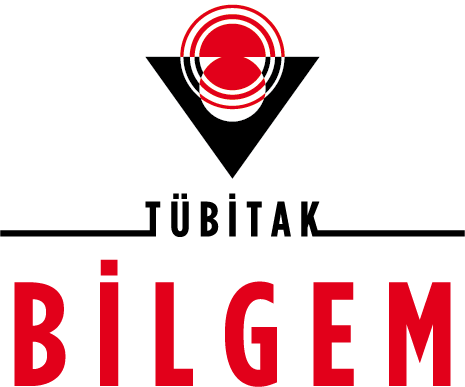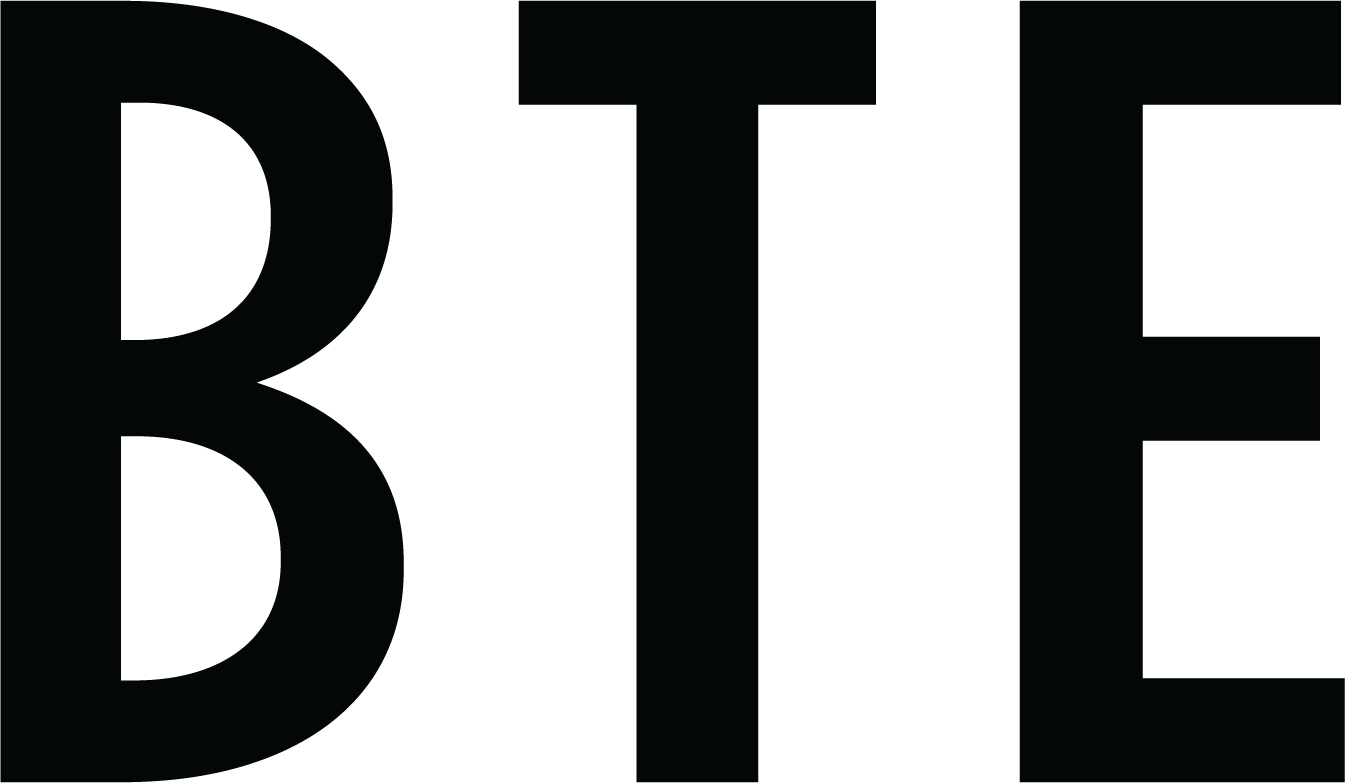BİLGEM
Sensor Technologies
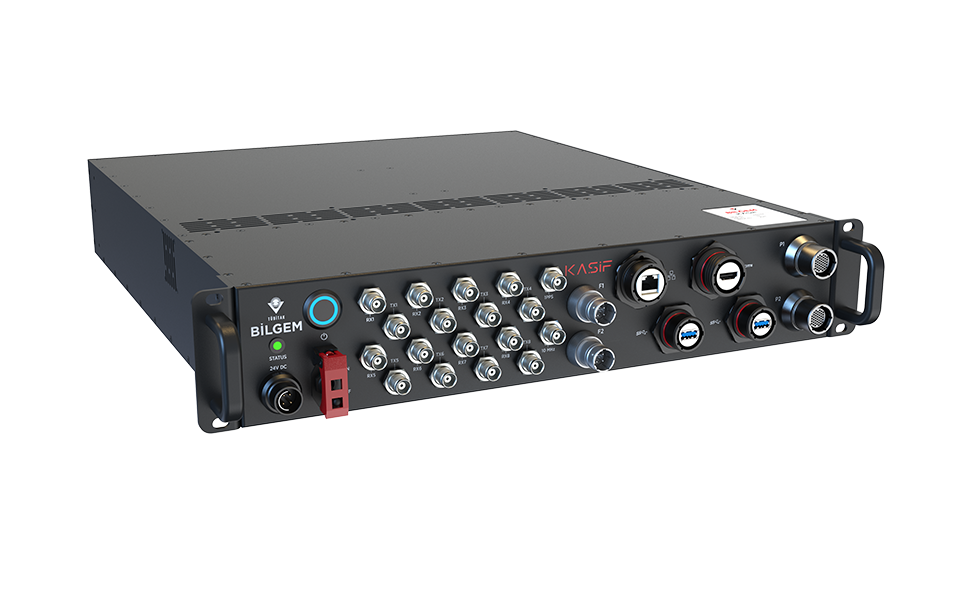
KAŞİF
- Product information
- Technicial Features
- Technical Features-2
- General Features
- General Features-2
- General Features-3
The KAŞİF System, which we refer to as the Multidimensional Radio Communication Signal Analysis Platform, is a communication intelligence system that performs three main tasks defined as:
- Beacon navigation and positioning
- Estimation of the spectrum parameters of the signal
- Determination of the communication protocol and modulation to which the signal belongs
by conducting artificial intelligence-based analysis on the time, frequency and space dimensions of signals received from sources broadcasting at frequencies between 10 MHz - 6 GHz.
The main functional capabilities of the KAŞİF System:
- Spectrum Monitoring for communication signals
- Spectrum Utilization Estimation
- High Resolution Direction and Location Detection
- Frequency-Hopping Signal Detection & Direction Finding
- AI Based Communication Signal Classification
INTERFACES
- 8 x ADC RF Input
- 8 x DAC RF Output
- 4 x 10GBps Fiber Interface
- 1 x HDMI 2.0
- 3 x USB 3.1 Interface
- 3 x 10/100/1000Gbps Ethernet Interface
- 1 x 5Gbps Sata Interface
- 1 x 10GBps M2 SSD Interface
- 1 x Audio Interface
- 1 x RS232+ 1x RS485 Interface
- 3 x USB2.0 Control Interface
- 1x 1PPS CLK + 1x REFCLK Sync Interface
- Total 440W Power Consumption
- 18-36VDC Power IN
- Mil-STD 461F
- Mil-STD 810G
- Mil-STD-704F (20-50VDC Power)
- MIL-DTL-83526-21
- D38999
- -20°C + 55°C Operating
- -40°C + 65°C Storage
- Rack Unit 2U
- Operating Frequency Range
75 MHz - 6000 MHz centre frequency setting
30 MHz - 6000 MHz operating range - Frequency Adjustment Step
2.3 Hz frequency adjustment step - Number of Channels
4/8 channel - Instant Analog Bandwidths
200 MHz - Instant Digital Bandwidths
200 MHz, 100 MHz, 50 MHz, 25 MHz, 12.5 MHz, 6.25 MHz, …., 12.227 kHz - Sampling Rate
245.76 MSPS - Number of Sampling Bits
16 bit - Automatic/Manual Gain (Automatic Gain Control, AGC) Information
0 - 30 dB adjustable gain range
0.5 dB manual step range from 0 to 6 dB, 1 dB adjustable step range from 6 to 30 dB - FFT (Spectrum) Resolutions/Values
Minimum: 58.59 Hertz (increasing in x2) - Noise Figure (NF) Value
13 – 20 dB
- RF Sensitivity Values from Receiver Input
-77 dBm to -70 dBm - Imagination Suppression Value
65dBc for 75MHz
70dBc for 500MHz
64dBc for 3000MHz
75dBc for 6000MHz - Instantaneous Field Dynamic Range (SFDR) Value
60dBc for 75MHz
70dBc for 500MHz
64dBc for 3000MHz
57dBc for 6000MHz - Total Dynamic Area Value
>100 dB - IP2 Value
IIP2: 32 dBm @500 MHz - IP3 Value
IIP3: 6 dBm @500 MHz - LO Leakage Value
< – 60 dBm - P1dB
-7.5 dBm to -9 dBm - Number of DDRs Available from Each Channel
The number of DDCs is 8 when all bandwidths are selectable. - Total number of DDRs available from the receiver
The total number of DDCs is 32. - Available DDR Bandwidths
200 MHz, 100 MHz, 50 MHz, 25 MHz, 12.5 MHz, 6.25 MHz, …., 12.227 kHz - Wideband (200 MHz) I/Q Data Format
It can be configured according to the desired format. Data consists of 16 bits I and 16 bits Q. - Wideband (200 MHz) I/Q Data Interface Type
It can be configured according to the desired format. Data consists of 16 bits I and 16 bits Q.
- Wideband Scanning Speed
4.27 ms scan time at 234.38 Hz resolution
266.67 us at 3.75 khz resolution - RF Interface/Connector Type
Circular RF connector on box,
SSMC connector on board - Power Supply and Interface Information
18 – 36 VDC - Power Consumption
Up to 440W, depending on the use of the desired interfaces. - 1 Gbit and 10 Gbit Interface Information
Circular 1 Gbit Ethernet Mil Connector
Circular 10G SFP+ Mil Connector
FDC101 / Frequency Reducer
- Product information
- Technicial Features
The FDC101 is a high dynamic range frequency converter that downgrades signals in the 100 MHz – 18 GHz frequency range to three user-selectable intermediate frequencies (IFs): 70 MHz, 140 MHz and 160 MHz. In addition to three IF outputs, it provides one L-band output at 1 GHz. The real-time bandwidth at the L-band output is 500 MHz. There are 8 selectable sharp filters on the 70 MHz and 160 MHz IF outputs. Both IF and L-Band outputs can be viewed from the monitor outputs located on the rear panel. The outputs of the local oscillators in the device can be accessed from the rear panel optionally.
The technical specifications of the FDC101 are such that it meets the need for a high performance microwave ELINT receiver. The FDC101 is designed to detect high data rate PCM/TDM signals and RADAR signals that require high pulse accuracy. With its low group latency decay and ultra-low phase noise, the FDC101 allows the detection of modern digital modulated signals such as high-level QAM.
- Frequency range: 100MHz-18GHz
- Real-time bandwidth: 500, 100, 40, 30, 20, 10, 5, 2, 1, 0.5 MHz
- IF output frequencies: 70, 140, 160 MHz and 1 GHz L-Band Output
- RF to IF gain: > 42 dB
- Dynamic range: 60 dB @ 40 MHz IF bandwidth
- Adjustable input attenuation: 0-70 dB (10 dB steps)
- Frequency lock time: 1 ms
- Phase noise: < -110 dBc/Hz (100 kHz offset)
- Dimensions: 2U height, 19 inches wide
- Remote control: Ethernet
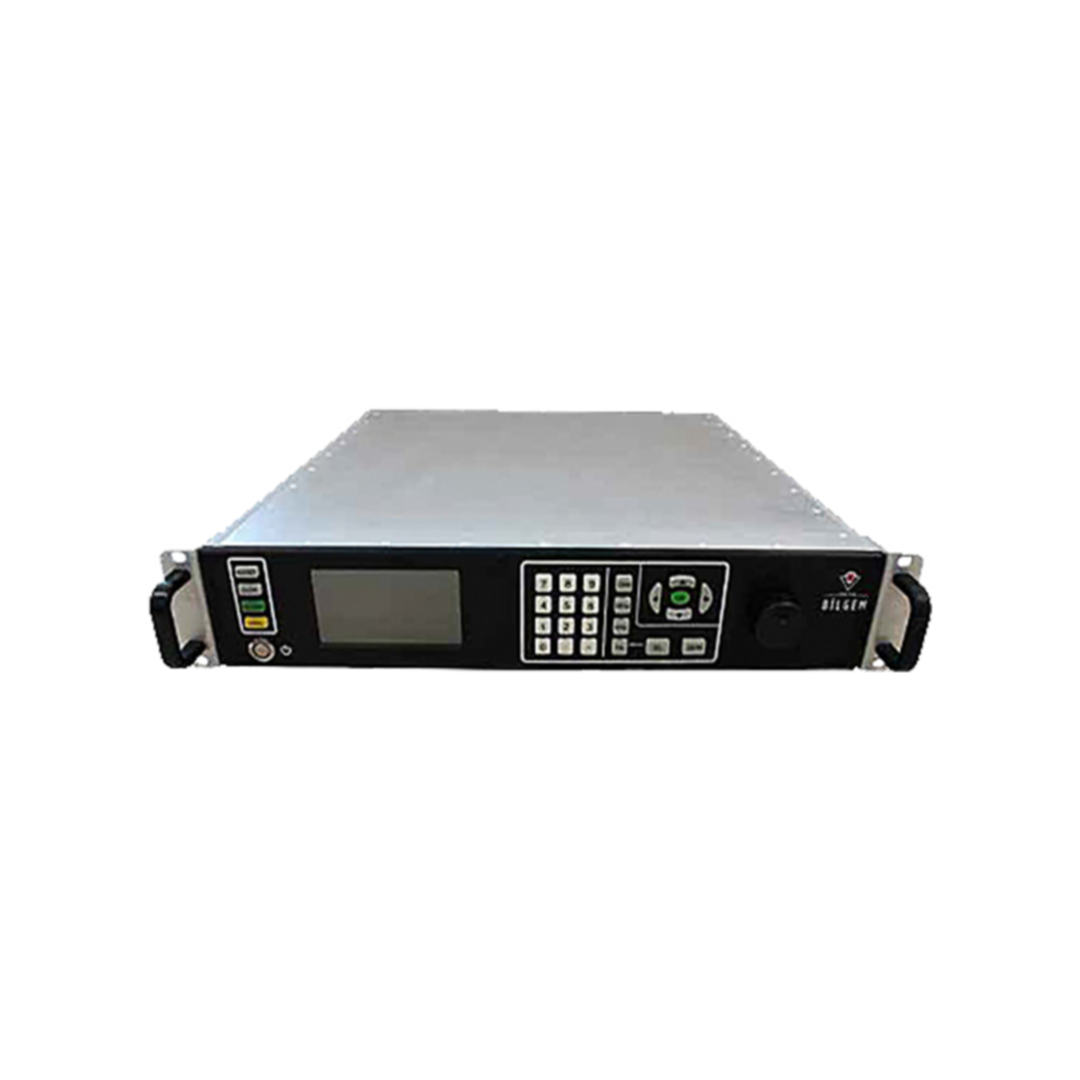
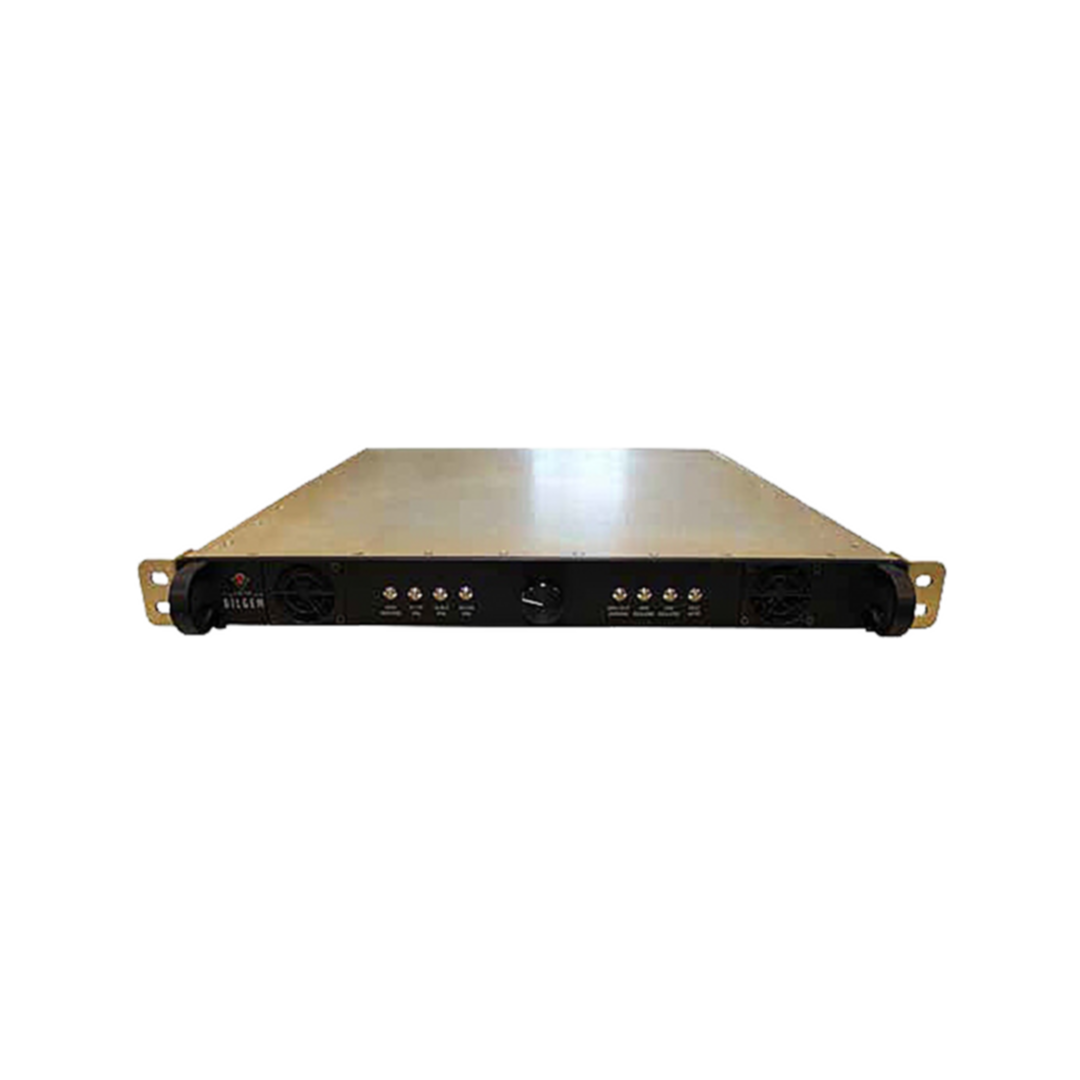
FDC201 / Microwave Frequency Extender
- Product information
- Technicial Features
FDC201 is a frequency expander designed to increase the operating frequency range of frequency reducers such as the FDC101 operating up to 18 GHz to 40 GHz. It moves the signals in the 18 - 40 GHz frequency range to the 2.5 - 17.5 GHz frequency range as blocks, making the FDC101 operable. The FDC201's specifications meet the need for a high performance microwave frequency expander in SIGINT applications.
FDC201 has three RF inputs and one RF output. The signals in the 0.1 – 18 GHz (bypass), 18 – 26.5 GHz and 26.5 – 40 GHz ranges given to the inputs are transmitted to the output by directly bypassing or by performing the frequency reduction process. The input & output connectors used for the 10 MHz reference mark are also located on the rear panel of the device. Designed in accordance with the 19 inch rack standard, the FDC201 device has RS232 and Ethernet connections for remote control.
- Frequency range: 18 GHz - 40 GHz
- Noise number: 10 dB (typical)
- IF output frequency range: 2.5 GHz - 17.5 GHz
- RF to IF gain: 12 dB (typical)
- Input P1dB: -5 dBm (typical)
- Image suppression ratio: 75 dB (typical)
- Phase noise: 0.4° rms (typical)
- Dimensions: 1U height, 19 inches wide
- Remote control: Ethernet and RS-232
FD300A / IF Converter System
- Product information
- Technicial Features
FD300A is designed to eliminate the incompatibility between microwave receivers with different output frequencies used in electronic intelligence systems and systems that record, digitize, display and analyze IF outputs.
It enables the conversion of carrier frequencies in the 10-300 MHz range to standard intermediate frequencies of 70, 140, 160, 10.7, 21.4 MHz and frequencies between 10 MHz-65 MHz in 5 MHz steps. 1 GHz carrier frequency signals can also be converted to these intermediate frequencies. It is possible to output the input signal without changing the carrier frequency, with or without filtering. The output includes 8 different filter blocks around 70, 140 and 160 MHz, with the possibility of selecting different bandwidths, allowing automatic and manual gain control. 160 MHz video output facilitates the measurement of pulse modulated signals. All functions of the device can be controlled via the front panel display and keypad or via a computer via Ethernet or RS-232 connection.
- Input frequency range: 10 MHz-300 MHz & 1 GHz (Resolution: 100 kHz)
- Output frequency values:
- 70, 140, 160 MHz (IF output)
- 70, 140, 160, 10.7, 21.4, 10 > 65 MHz (PAN IF OUT)
- Noise number: 14 dB (typical)
- OIP3: +18 dBm
- P1dB: +17 dBm (typical)
- RF to IF gain: 45 dB (typical)
- Phase noise @ 100 kHz Offset: -109 dBc/Hz
- Imaginary frequency suppression: 90 dBc
- Control interface: Ethernet, RS-232
- Connector type: BNC
- AC supply: 198-242 VAC, 47-53 Hz
- Weight: 9.5 kg
- Operating temperature range: 0°C to +50°C
- Input-output impedance: 50 Ohm (IF In & Out), 93 Ohm (video output)
- Dimensions: 2U height, 19 inches wide, 53 cm deep
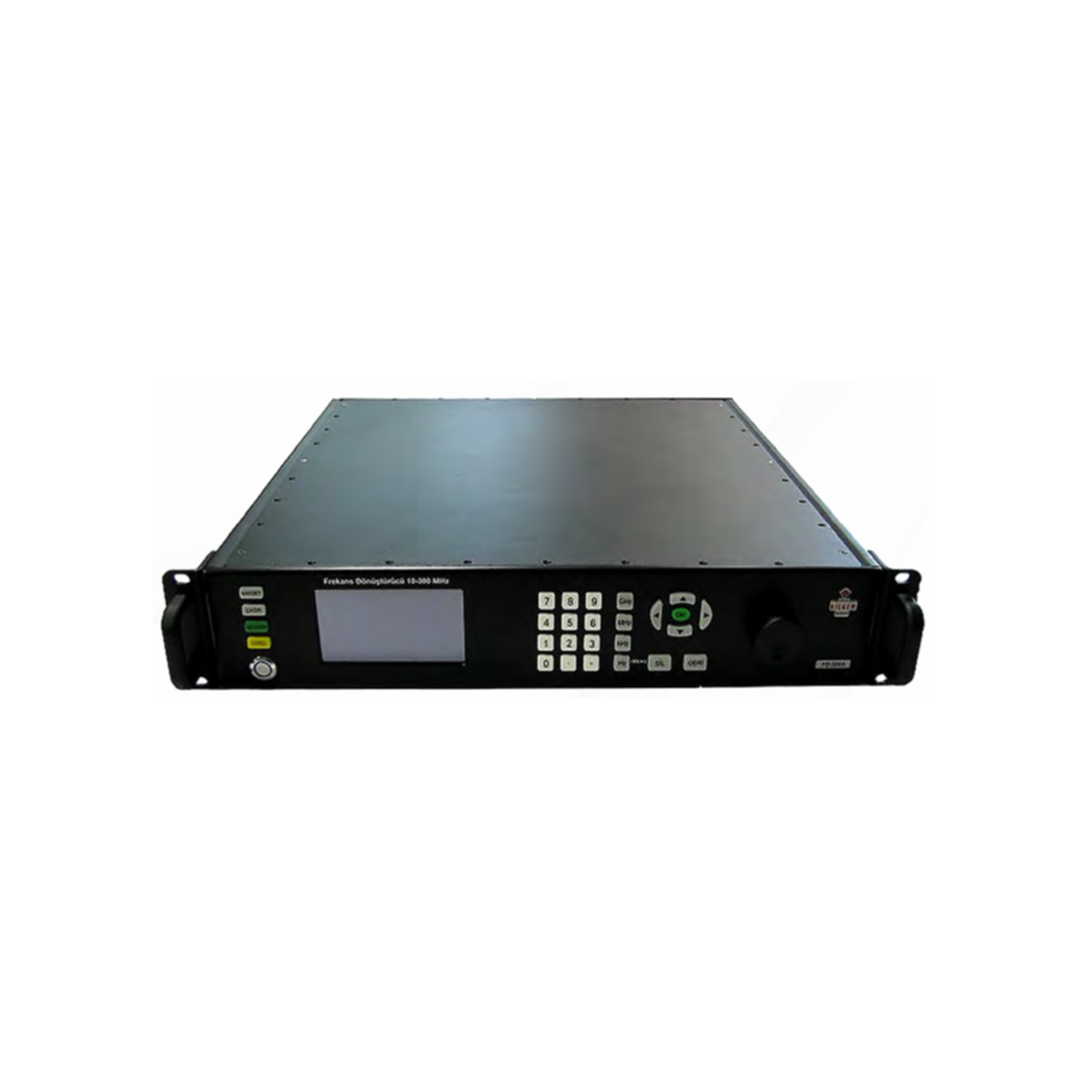
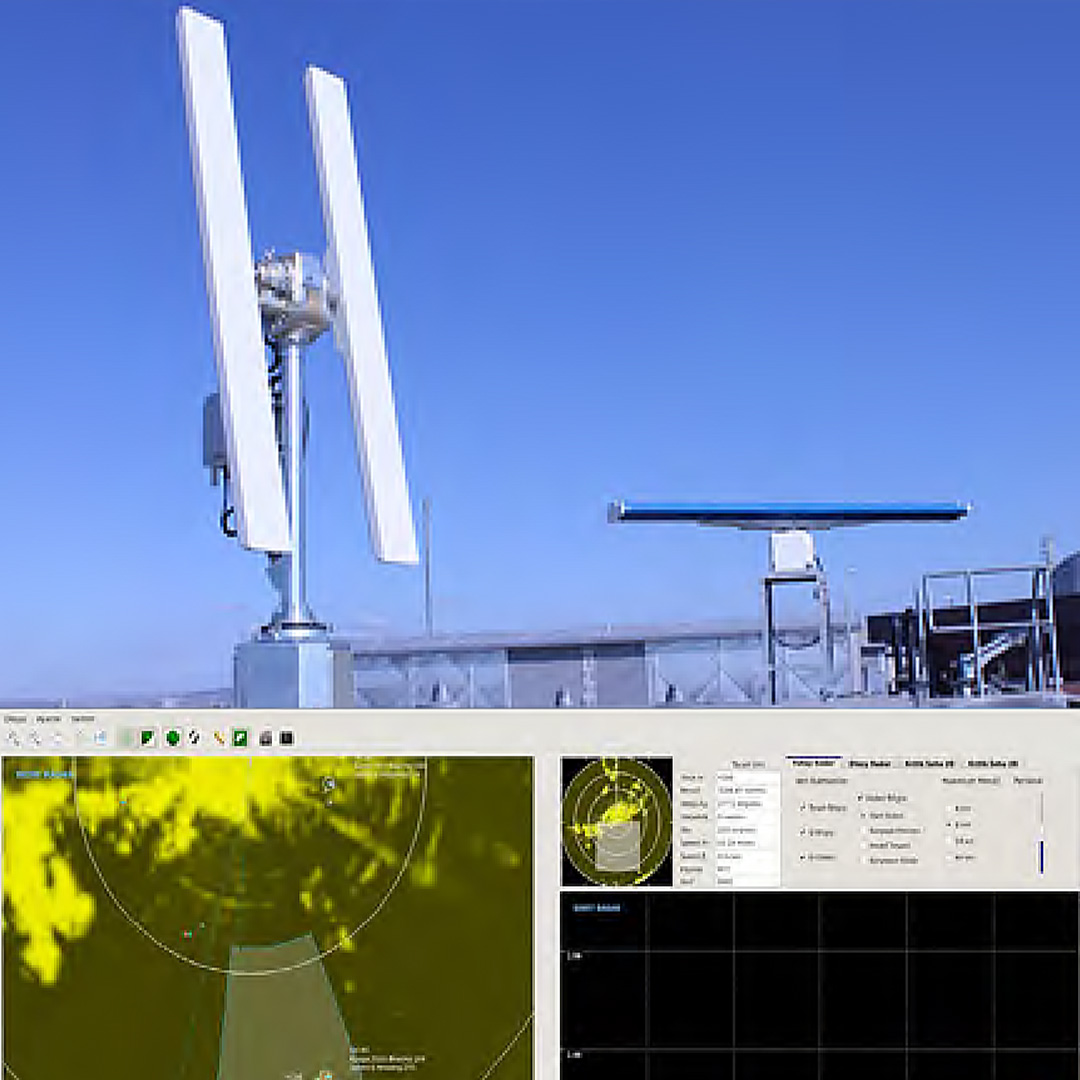
KUŞRAD - Bird Detection Radar
- Product information
- abilities
- Technicial Features
KUŞRAD was developed in cooperation with TÜBİTAK BİLGEM and the State Airports Authority (DHMI). The system, which operates continuously 24 hours a day, can detect birds, flocks of birds and aircraft targets moving within a 40 km radius; it can extract distance, altitude, direction, speed and route information. This system has been developed to detect and monitor migratory birds soaring in critical areas around airports in civil aviation, to evaluate them in terms of flight safety and to determine the most suitable time periods for scheduled flights.
UNITS
- Sensor Campus (Horizontal Radar, Vertical Radar, detection and tracking equipment, configuration and maintenance equipment, GPS, meteorological measurement system, uninterruptible power supply)
- Operations Center (Video recording system, operator interface consoles, server and storage units, printer and uninterruptible power supply)
- Three-dimensional volumetric detection and tracking of air targets
- Classification of air targets (Bird, flock and aircraft)
- Identification of birds and bird flocks entering critical areas and audio-visual warning
- Detailed analysis of desired targets in operator control
- Recording and statistical analysis of detection and tracking data
- Remote access and network connection to statistical data
- Horizontal Radar and Vertical Radar data fusion
- Reporting outputs in ASTERIX format
- Video recording and playback
- Horizontal Radar (YR): A horizontal scanning pulse radar in the S-band
- Vertical Radar (DR): Frequency modulated continuous wave (FWCW) radar scanning vertically in the X-band
- Working modes:
- Mode 1: 3D volumetric detection and tracking
- Mode 2: YR 2D detection and tracking, Sectoral and high resolution Doppler analysis with Vertical Radar
- Antenna beamwidth: 1.8° horizontal, 25° vertical (YR), 0.8° vertical, 10° horizontal (DR)
- Antenna rotation speed: 21 rpm (YR), < 100°/s (DR)
- Detect/track range: 40 km (YR), 20 km (DR)
- Resolution: < 20 m (YR), < 6 m (DR)
- Power: 60 kW peak (YR), 20 W continuous (DR)
- Darbe genişliği: 0,2 – 0,6 μs (YR)
- Darbe tekrarlama frekansı: 1100 – 600 Hz (YR), > 3.200 Hz (DR)
- Doppler processing: > 32 step speed levels (DR Mode 2)
- Tracking speed range: 2-100 m/s
- Number of targets: < 500
MGR - National Surveillance Radar
- Product information
- abilities
- Technicial Features
MGR was developed together with TÜBİTAK BİLGEM and State Airports Authority (DHMİ). This basic surveillance radar (PSR) system for civil or military air traffic control and precipitation determination is an S-band Doppler solid state pulse radar. The system has been designed in accordance with ICAO and EUROCONTROL recommendations and standards. With coherent advanced digital signal processing methods, aircraft are detected and tracked at a range of 60 nautical miles in different weather conditions. In this system, moving target detection (MTD) and clutter reduction operations are performed with high/low beam selection, precise time control (STC) application, adaptive clutter map and Doppler filters, and up to 1,000 targets can be tracked simultaneously. In addition, with the precipitation channel in the system, 6-stage precipitation information with a resolution of 1.4° to 0.95 nautical miles and 2-dimensional location of precipitation regions can be obtained. The system has a clean spectrum output that complies with the limits set by the NTIA.
- Detection and tracking of air targets
- Determination of precipitation intensity and precipitation regions
- User-friendly visual interface design
- Static (ground) clutter reduction
- Radar remote control and monitoring
- Video recording and playback
- Reporting outputs in ASTERIX format
- S-band solid state Doppler pulse radar
- Coherent signal processing
- Pulse compression (Nonlinear FM)
- PRI/PRF Staggering
- Frequency Staggering
- Doppler filter bank and MTI
- Precipitation channel (6 levels of precipitation reporting)
- Antenna beam modified cosecant squared 45° vertical (low and high beam), 1.45° horizontal
- Circular and linear polarization
- Antenna rotation speed >= 12 rpm
- Range: 60nmi
- Range resolution < 200 m
- Power >=18k W peak
- PRF multiple PRF (830 Hz average)
- Doppler processing > 4 banks Doppler filtering
- Target tracking speed range 60-300 m/s
- Maximum number of targets 1,000
- Yağış kanalı çözünürlüğü 1,4° – 0,95 nmi/6 seviye yağış bilgisi
- Interface PPI and maintenance-configuration console
- System interface EUROCONTROL ASTERIX CAT240 video, CAT34 Service Messages, ASTERIX CAT48 Plot/Track
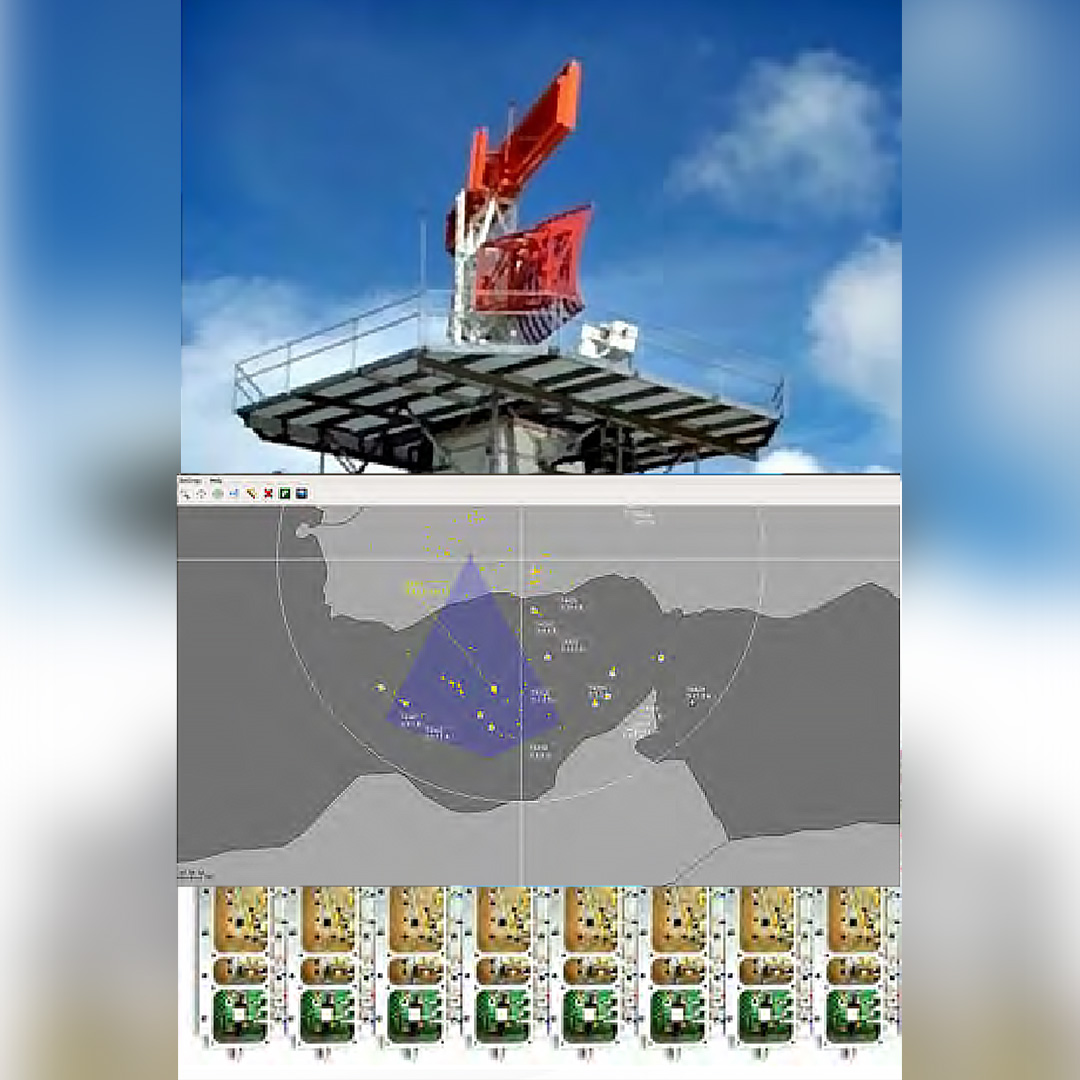
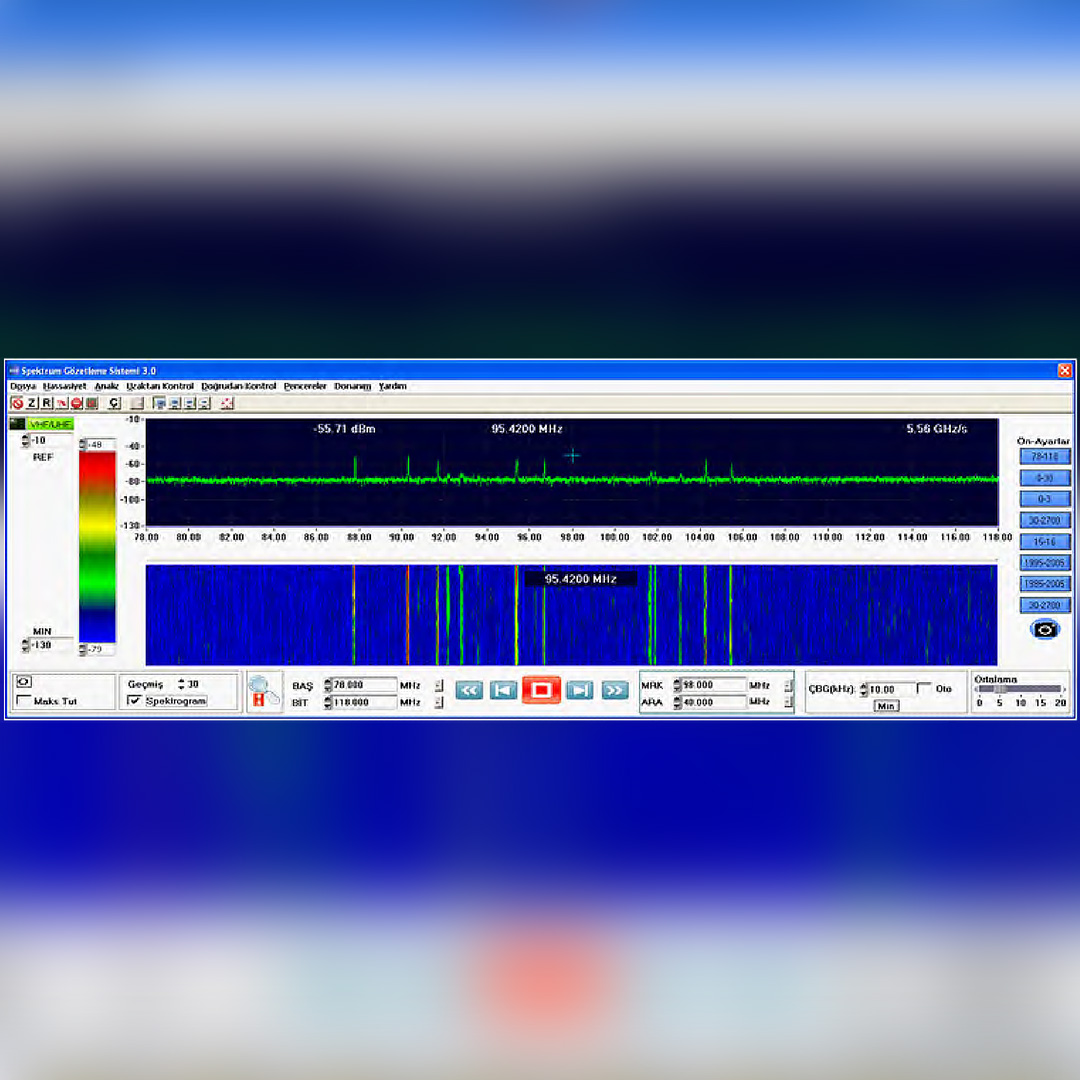
SGS 4.0 / Spectrum Surveillance System
- Product information
- Technicial Features
With its unique RF Hardware and Spectrum Scanning Software, SGS 4.0 enables broadband monitoring of the frequency spectrum from 9 kHz-2.7 GHz. The upper limit of the operating range is designed to be easily extended up to 18 GHz. SGS 4.0 uses the Multichannel Signal Tracking and Analysis Algorithm (MSTA) to demodulate up to 64 analog signals simultaneously within a 40 MHz band and records the resulting audio data.
SGS 4.0 is capable of setting alarms to warn of activity at target frequencies, masking signals of no interest, displaying signals in spectrograms, and controlling multiple receivers over serial and network connections. The device, which can also be used with remote access over the network, stands out with its scanning speed of over 15 GHz/s and signal reception sensitivity.
- Operating range: 9 kHz-2.7 GHz (expandable to 18 GHz)
- Real-time bandwidth: 40 MHz
- Number of demodulator channels: 64 (within 40 MHz band)
- Supported modulation types: FM, AM, LSB, USB, CW
- Sensitivity: < -140 dBm (270 Hz WBG, pre-amplifier on)
- Pre-amplification: 0/20 dB
- Dynamic range: > 80 dB @ 100 kHz IFBG
- Adjustable input attenuation: 0 - 60 dB (5 dB steps)
- Scanning rate: 15 GHz/s @ 100 kHz AWG
- Phase noise:
- < -90 dBc/Hz (10 kHz)
- < -90 dBc/Hz (100 kHz)
- < -115 dBc/Hz (1 MHz)
- Dimensions: 2U height, 19 inches wide
YTA-018D / Software Based Broadband Receiver
- Product information
- Technicial Features
YTA-018D Software Based Receiver; It is a receiver that can detect signals in the frequency range of 10 kHz-18 GHz and can decode common modulation types such as AM, FM, QM, SSB, DSB, PSK, QAM. The device can process and display the signals it receives from the RF input, or it can output it by reducing it to 70 MHz intermediate frequency via the IF output on its front panel. In this way, the device acts as both a spectrum imaging system and a high-sensitivity receiver. The dynamic range of YTA-018D is very wide (Typical noise number: 12 dB and typical IIP3: 0 dBm). Due to its high sensitivity performance (typically -130 dBm/Hz), YTA-018D is also a very suitable candidate for detecting RADAR and various communication signals. The dream frequency suppression ratio is ideal (90 dB minimum over the entire operating band, typically 100 dB suppression).
The device provides the opportunity to be tested with its test and calibration function. It can be controlled remotely because it has an Ethernet interface.
The device occupies a volume of 7 x 28 x 43 cm³ and consumes only 80 W in spectrum scanning mode. It can work continuously for 2 hours at a time with the power it receives from its battery.
- Frequency range: 10 kHz-18 GHz
- Real-time bandwidth: 40 MHz
- Sensitivity: < -130 dBm
- RF to IF gain: > 45 dB
- Dynamic range: 65 dB @ 40 MHz IF bandwidth
- Adjustable input attenuation: 0 to 70 dB (10 dB steps)
- Frequency sweep rate: 10 GHz/s @ 100 kHz WBG
- Phase noise: < -115 dBc/Hz (100 kHz offset)
- Dimensions: 7 x 28 x 43 cm
- Remote control: Ethernet
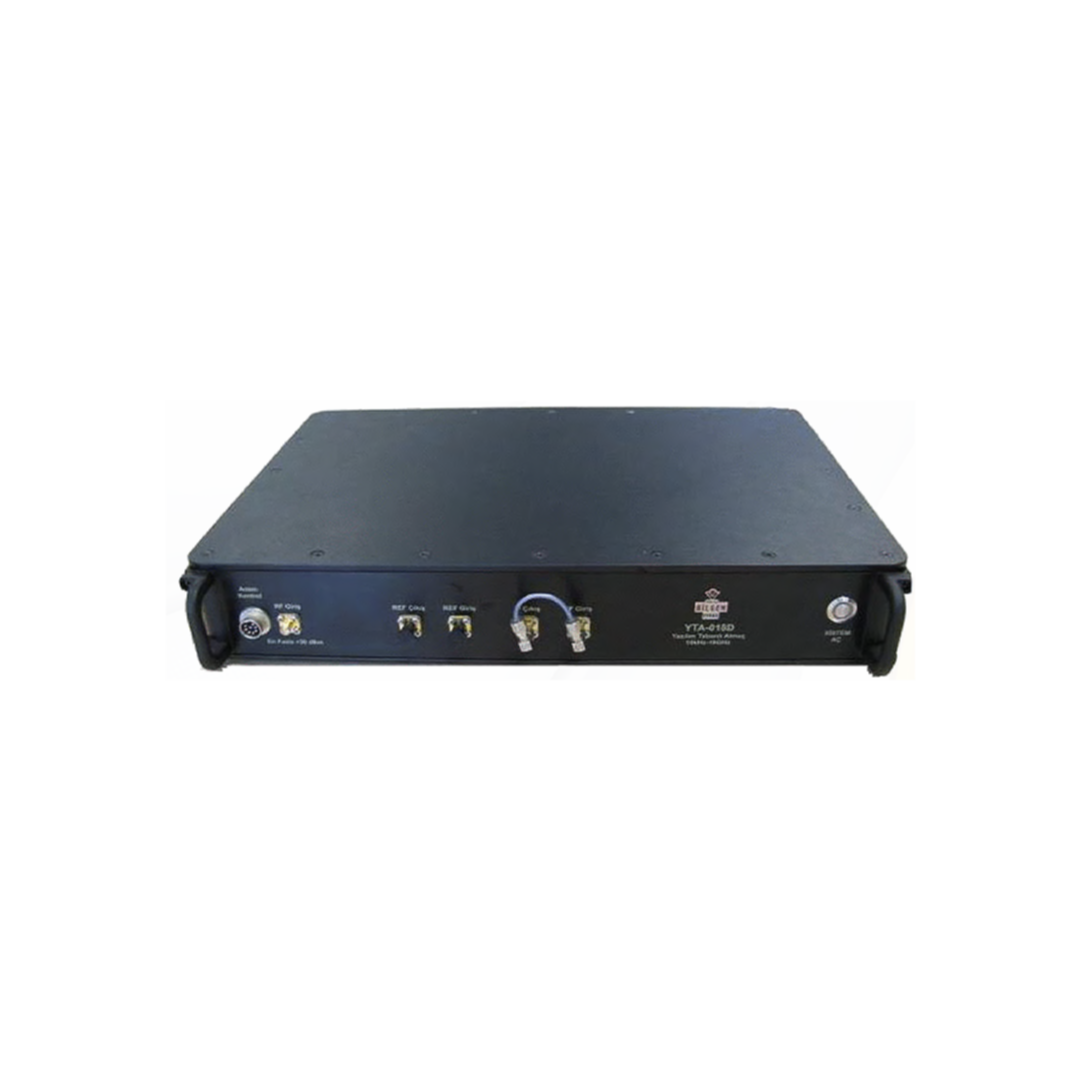
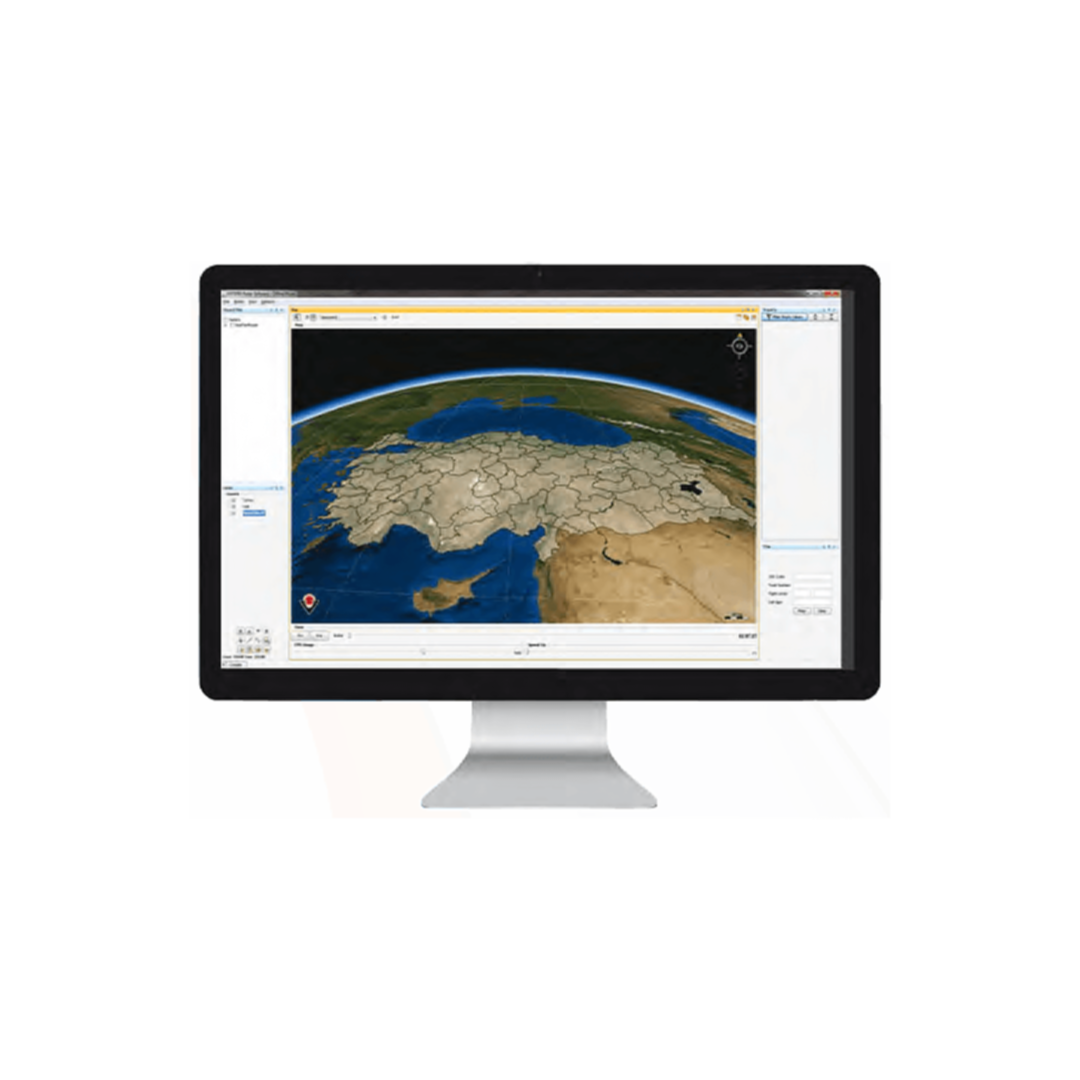
ASTERIXCARE - Radar Testing Software
- Product information
- Technicial Features
Developed jointly by TÜBİTAK BİLGEM and the State Airports Authority (DHMİ), AsterixCARE is a powerful and extensible application that can be used for testing, analysis and verification of radar data. Thanks to the application, it is possible to record and replay radar data and to store the recorded data in different file formats (excel, txt, etc.).
Within the application, user-friendly graphical interfaces and flexible software are offered for air traffic controllers working environments (ATC Environments). The radar data studied are analyzed in ASTERIX format, a EuroControl file standard.
- Snapshot, simultaneous recording and synchronous playback of multiple streams
- Plugin-based software, new categories can be added
- Converting to different file formats (excel, txt etc.)
- Ability to play radar recording files offline
- Radar data can be saved in EuroControl standard ASTERIX Final Format
- Radar data can be filtered with different parameters
- 2D and 3D viewing of traffic and track information
- Display of meteorological data
- Display of incorrect format and inappropriate data content as warnings and notifications
- Mode S, ADS-B, ASMGCS and Multilateration data format support
- Adding various map layers (airport layer etc.)
- Access to all content of ASTERIX data
- Zoom, distance measurement, track history and tag display

